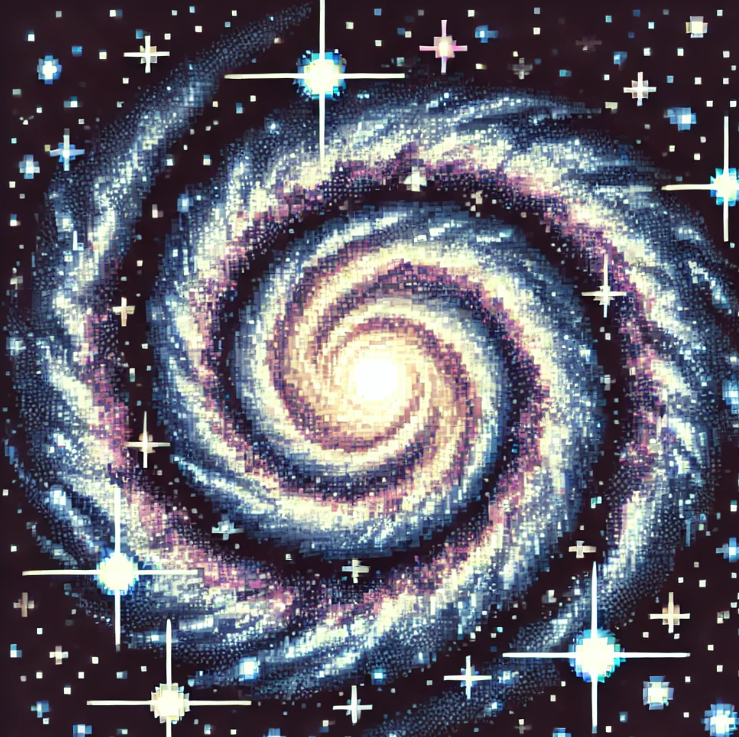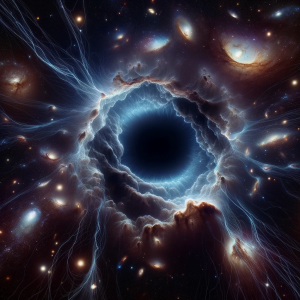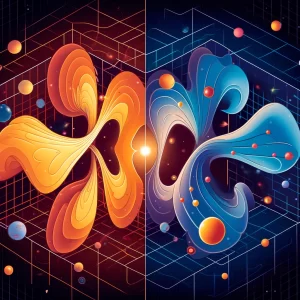
The Cosmic Tug-of-War: Solving the Mystery of the Expanding Universe
For as long as humans have gazed at the stars, the question of how our universe expands has been a source of wonder and curiosity. In the 1920s, Edwin Hubble made a groundbreaking discovery: the universe is expanding. But this raised a follow-up question—how fast? Since then, astronomers and physicists have been locked in a cosmic tug-of-war trying to nail down the universe’s exact expansion rate. The problem is, they keep coming up with two different answers, and neither seems to fit.
This clash, known as the “Hubble tension,” has been puzzling scientists for nearly a decade. And now, a new theory is emerging that might finally give us a solution: early dark energy. But what is it, and why does it matter? In this post, we’ll dive into this mystery, break down why it’s so significant, and explore how it could completely reshape our understanding of the cosmos.
The Cosmic Speed Trap: What’s the Problem?
Picture this: You’re driving down a long highway, but every speedometer in your car shows a different speed. One says you’re going 55 mph, another 65 mph, and a third insists you’re barely crawling at 40 mph. Confusing, right? That’s essentially what’s happening with the universe’s expansion.
When astronomers look at nearby galaxies to measure how fast the universe is expanding—called the Hubble constant—they get one answer. But when they look far into the past, at the early universe, the number doesn’t match up. This difference isn’t just a minor blip. It’s a big enough gap—around 8%—that it’s got scientists scratching their heads.
A Tale of Two Measurements
The first method for calculating the universe’s expansion comes from observing the cosmic microwave background (CMB). This radiation is like a baby picture of the universe, showing what it looked like just 400,000 years after the Big Bang. From the patterns of light and temperature in the CMB, scientists use a model known as Lambda Cold Dark Matter (ΛCDM) to estimate the Hubble constant. Using this approach, they get a value of about 67 kilometers per second per megaparsec.
On the other hand, when astronomers measure the expansion by looking at supernovae and other celestial objects in the more “local” universe, they come up with a higher number: around 73 kilometers per second per megaparsec.
So, why the difference? Could there be an error in one of these methods? After years of cross-checks, scientists have found no major mistakes. What’s left? A need to rethink the physics of the universe itself.
Enter Early Dark Energy: A Cosmic Solution?
To solve this puzzle, researchers are exploring a new idea: early dark energy (EDE). Let’s break it down with a simple analogy.
Imagine the universe is a giant balloon. Normally, when you blow into a balloon, it expands steadily. But what if, for a brief moment, an extra gust of wind makes it expand faster than usual? Early dark energy could be like that sudden gust—a mysterious force that gave the universe an extra push in its very early stages, only to disappear soon after.
The beauty of this theory is that it could explain why the early measurements of the universe (from the CMB) suggest a slower expansion rate, while the later measurements (from supernovae) suggest a faster rate. Early dark energy might have briefly sped up the expansion before settling into the familiar cosmic pace we measure today.
Testing the Theory: How Close Are We?
Right now, early dark energy is still just a hypothesis, but scientists are getting closer to testing it. New, more precise measurements of the CMB—along with upcoming data from galaxy surveys—could either confirm or rule out this theory in the next few years. If proven, early dark energy could be the key to unlocking the Hubble tension and reshaping our understanding of the universe.
But testing this idea isn’t easy. The fluctuations caused by early dark energy are subtle, and we need incredibly sensitive instruments to detect them. Fortunately, cutting-edge observatories like the James Webb Space Telescope and future projects like the Simons Observatory are equipped to give us the answers we’re looking for.
The Bigger Picture: Why This Matters Now
At first glance, the Hubble tension might seem like an abstract problem—something that only matters to scientists working in labs. But in reality, it could change everything we know about the universe. The standard model of cosmology has been incredibly successful in explaining the big picture of the cosmos for decades. But if early dark energy is real, it means we’ve missed a key piece of that puzzle.
Understanding how the universe expands has far-reaching implications. It affects our estimates of the universe’s age, its fate, and even the nature of dark energy itself, which makes up about 70% of the cosmos. Cracking the Hubble tension could also open up new avenues in physics, leading us to discoveries about how gravity works on the largest scales, or even hinting at physics beyond Einstein’s theory of relativity.
Join the Conversation
What do you think about this cosmic mystery? Do you find the idea of early dark energy intriguing, or do you have another theory? How do you think solving the Hubble tension could impact our understanding of the universe?
- If early dark energy proves to be the answer, how do you think it might change our understanding of dark matter and dark energy?
- What other mysteries of the universe do you think we’ll solve in the next decade, thanks to advancements in technology?
Join the Science Adventure
Stay updated with the latest discoveries in science! Our weekly newsletter is perfect for teachers and science enthusiasts. Get the newest research, major breakthroughs, and fascinating stories delivered to your inbox for free. Enhance your teaching and learning. Subscribe today! If you liked this blog, please share it! Your referrals help This Week in Science reach new readers.



